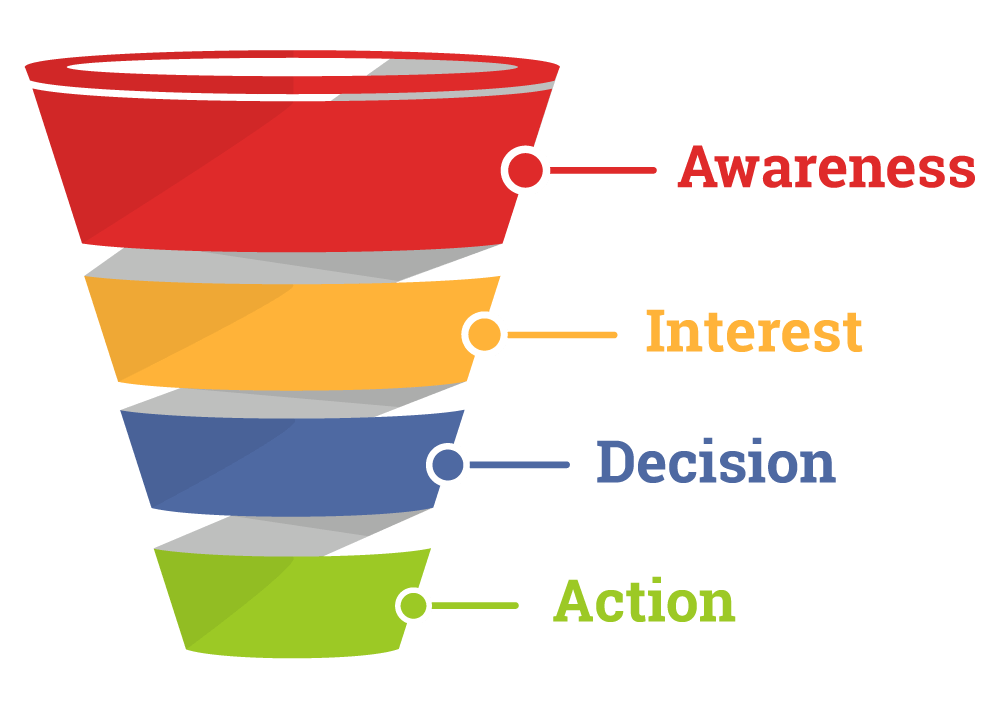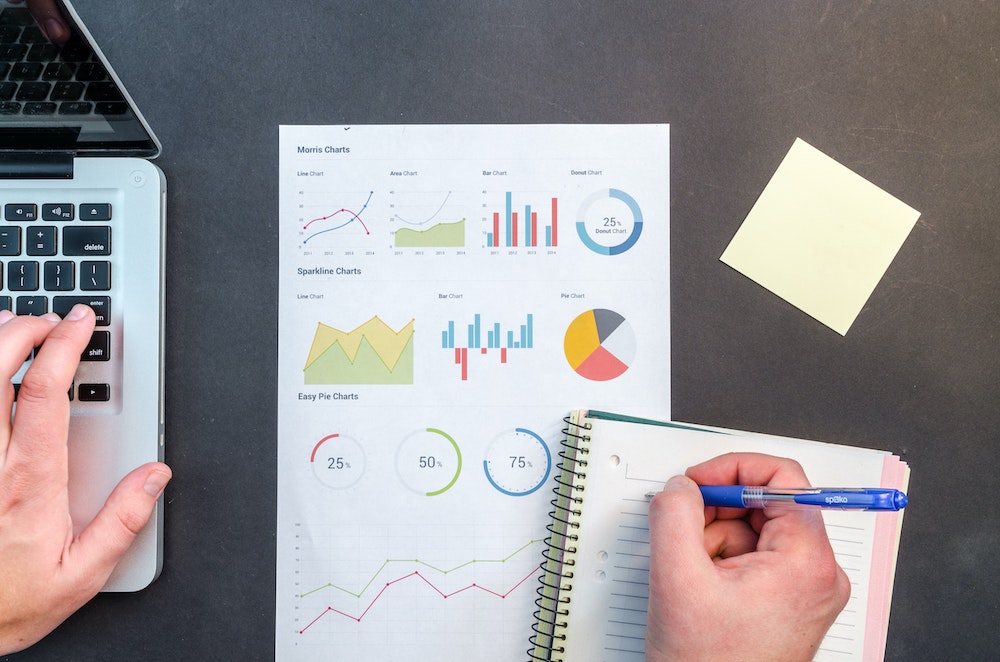This might surprise you, but most people aren’t ready to buy the moment they find out about your business.
At a minimum, if they already know or have researched your brand, they might be interested in how you can help them.
But the majority of people are nowhere near a purchase decision when they first discover you.
To turn a potential customer into an actual customer, you have to guide them through several buying stages before they’ll actually make a purchase.
Understanding the Buying Stages

Over the years there has been a lot of research about the way people make buying decisions.
The traditional buying stages, which have been researched for over a century, are:
- Attention
- Interest
- Desire
- Action
Buying stages online are always slightly different depending on the industry and business, but they still are useful to understand for ecommerce just as well as for retail or service businesses.
The main steps included in the buying process are:
- Discovery: organic traffic through SEO, PPC, referral traffic.
- Top of the Funnel (TOFU): which coincides with the traditional awareness stage
- Middle of the Funnel (MOFU): describing prospects in the consideration stage
- Bottom of the Funnel (BOFU): corresponding to latter life-cycle stages (i.e. decision, conversion, purchase
- Re-engagement: strategies and techniques meant to recover lost prospects/leads, usually through retargeting ads or email marketing
At each stage in the buying process, you will lose some potential customers, but a good marketing funnel will keep those losses to a minimum.
What is a Marketing Funnel?
In reality, a ‘marketing funnel’ is a fancy word for a strategic way of tracking how your marketing guides potential customers through the buying process.
Some businesses have incredibly simple marketing funnels. Other marketing funnels have dozens of detailed steps.
Each marketing funnel follows the three stages: top, middle, and bottom of the funnel.
Stage 1) Understanding The Problem (TOFU)
Pain is a great instigator of change. To put it simply, if people don’t feel some sort of pain, they aren’t going to go to the effort to make a change like buying what you’re selling.
People don’t look for a solution until they realize there is a problem. This is important because understanding a potential customer’s pain point(s) is the key to convincing them that you can make that pain go away.
Marketing Tools: online blogs, videos, email newsletters, how-to-guides
Stage 2) Looking for Solutions (MOFU)
As humans, we have a profound aversion to pain, so when something hurts, we look for ways to make the pain stop.
Customers and clients won’t be interested to buy before they recognize that something needs to change. Marketing can help prospective buyers to figure out what we need to solve our problem.
Here are a few ways people try to find solutions to their problems online:
- Searching online
- Reading blog posts and eBooks
- Asking questions in forums
- Checking reviews
- Noticing display ads
- Watching videos
Marketing Tools: online blogs, videos, infographics, news articles, advertorials
Stage 3) Comparing Options (MOFU)
Of course, you can’t search online for very long before discovering a lot of potential solutions to almost any problem. At this point in the buying process, the question changes to “which solution best solves my problem?”
While there is a decent chance that your potential customers are checking out the competition at this stage, the good news is that anyone who is comparison shopping is probably going to make a purchase. The challenge is figuring out how to get them to buy from you.
Marketing Tools: Customer Reviews, Use Cases, Brand Comparisons
Stage 4) Ready to Buy (BOFU)
Once someone has decided that your business has the best solution to their problem, they usually just make a purchase. However, any negative experiences can upset what should be a closed deal.
In addition to negative feedback, poor experiences during the buying process can also convince customers to abandon the cart.
Whether it’s a difficult checkout page or a poor customer service experience, a sale is only real once the money is in your bank account. Therefore, you can’t assume that once someone decides to buy that their buying process is over.
Marketing Tools: How To Buy Guide, Online Checkout, Automated Email Follow-Up
Constant Tweaks and Improvements
Creating a marketing funnel using the process described above is no easy feat. Each business is different and will require a slightly different approach.
Setting up an effective marketing funnel isn’t a project that takes one afternoon, it’s a pursuit that you’ll want to keep testing and tweaking. It’s not easy, but it’s an intelligent way to help your prospects to buy, and to grow your business.














